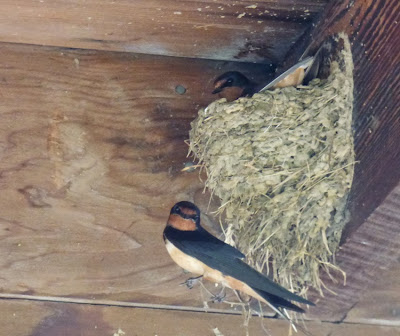Yet Bernheim has always been a place for me to learn, both about nature itself, and how to help people see and appreciate it. Both Dick and I received our training as Certified Interpretive Guides from our mentor, Wren Smith, who works at Bernheim. This week I attended another training session on using social media as an interpretive tool. Paul Caputo, from the National Association of Interpretation, asked the question, "What is interpretation?" Since all of us were CIGs, we all should have known that answer easily, but silence filled the room. I always struggle with that term, yet no one has come up with a better term.
NAI defines interpretation as "a mission-based communication process that forges emotional and
intellectual connections between the interests of the audience and the
meanings inherent in the resource." Hmm, you can see why we have trouble remembering it. Another description says it involves "what things mean, how they fit together, and why it matters," and helping our visitors understand. Although our original CIG training focused on personal interaction with visitors, such as leading tours and classes at a facility such as Bernheim or Creasey Mahan Nature Preserve, Paul reminded us that we need to relate to those visitors wherever they are, which sometimes may be at home in front of their computers or looking at their phones. We can still be interpretive on social media, he assured us, giving people what they want to know about our sites, not just what we think they should know about us. By appealing to the right followers, we can create a real community of our site's friends. When I return to Creasey Mahan, I'll start by explaining concepts like podcasts, hashtags and how Facebook doesn't actually deliver all your posts to all your friends to our director. Whoa. This is going to take some adjustment.
With my head spinning, I thanked Paul and Wren at the end of the second day's session, and headed out into the Arboretum for a walk and some birding, to clear my mind. Each year, the Barn Swallows return to Bernheim's Garden Pavilion, next to Lake Nevin. They build nests of mud, grass and swallow spit in the rafters of the pavilion. Each year the staff tears down the nests, and each spring the birds shrug their wings and rebuild them. How can this be interpreted to non-birders?
Swallows are like all of us. They want a safe place to raise their young, protected from wind and weather. They want a good supply of insects to feed them. And like us, they sometimes have to deal with unwanted traffic to attain these vital goals. To the Swallows, people walking along the Pavilion's porch are like the Interstate traffic many of us deal with every day driving to work. We don't like it particularly, but with care, we can avoid disaster, and get home each day to our families. Since this location provides all their other needs, they put up with the inconvenience and potential danger of the traffic. Of course, sometimes people are startled by a near collision with a fast flying Swallow which doesn't slam on its brakes for anything. Now I just need to interpret people to the Swallows!







2 comments:
Enjoyed the post Kathy, Although I don't interpret for folks, I do interpret and evaluate what I see outdoors. The post nice food for thought, Thank You...
Bernheim is a wonderful, ever-changing resource, and each visitor is unique, as is each interpreter and interpretation. The three, resource, interpreter,
and visitor unite to make each visit memorable.
Post a Comment